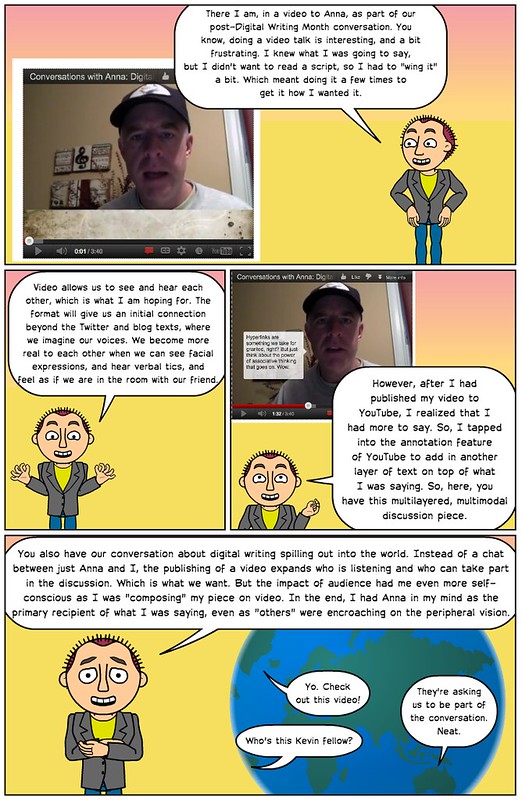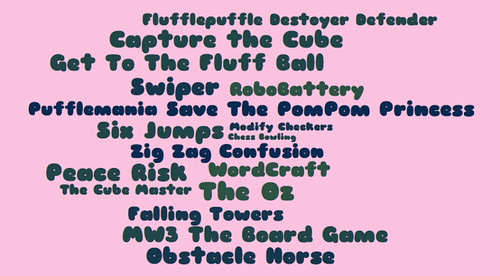(Note: When Digital Writing Month came to a close, Anna Smith and I decided that we wanted to keep the conversations about digital writing going. Our plan is to do it multimodally — using various platforms to engage in a discussion about the ways technology is influencing our perceptions of literacy. We’re doing this as a series of blog posts over at the National Writing Project’s Digital Is site, and when we are done, we will collect them all into a Resource at Digital Is. — Kevin)
Creating Conversation: Composing in the Digital Age
One of the many potentials of the shifts in envisioning writing in multimodal spaces is the chance for new conversations — for stretching out thinking beyond your own physical space and joining in discussions about the changes now underfoot. During November 2012’s Digital Writing Month, educators and writers and others from across many teaching levels and learning domains — from public schools to college universities and beyond — were engaged in a deep exploration of digital tools and ideas, and many participants shared reflective practice on what those digital choices were doing to their conceptions of writing.
As two explorers during Digital Writing Month, Kevin Hodgson and I, Anna Smith, have decided to continue that conversation through consideration of digital literacies and contemporary composition by coordinating a multimodal conversation that begins with the idea of Digital Writing Month and then stretches outwards from there. Kevin, a sixth grade teacher in Western Massachusetts and a member of the National Writing Project, and I, Anna, a secondary teacher, teacher educator and co-author of Developing Writers: Teaching and Learning in the Digital Age, will be jumping, leaping and diving from digital media platform to digital media platform in their conversation, as we first reflect on literacies in the 21st Century and then ask, and respond to, each others’ questions.
We also encourage YOU to join us in these conversations. Take part in this digital tapestry of ideas and reflections! You can find these conversations on our Digital Is blog posts: Kevin’s Blog Posts and Anna’s Blog Posts. Feel free to comment and respond in kind. We will then be curating these conversations, including YOUR contributions in a Resource Page. Kevin is up first, so check out his blog to see how this conversation gets started!

Here was the first salvo in our conversations. I created a video piece for Anna, remembering an experience that opened my eyes to the possibilities of online writing, and I end by asking her to respond. But you can, too, either here or at Digital Is.
And part of what we are doing is reflecting on our experiences. I created a comic reflection of what it means to use video as your canvas for this kind of talk.

Peace (in the convo),
Kevin




